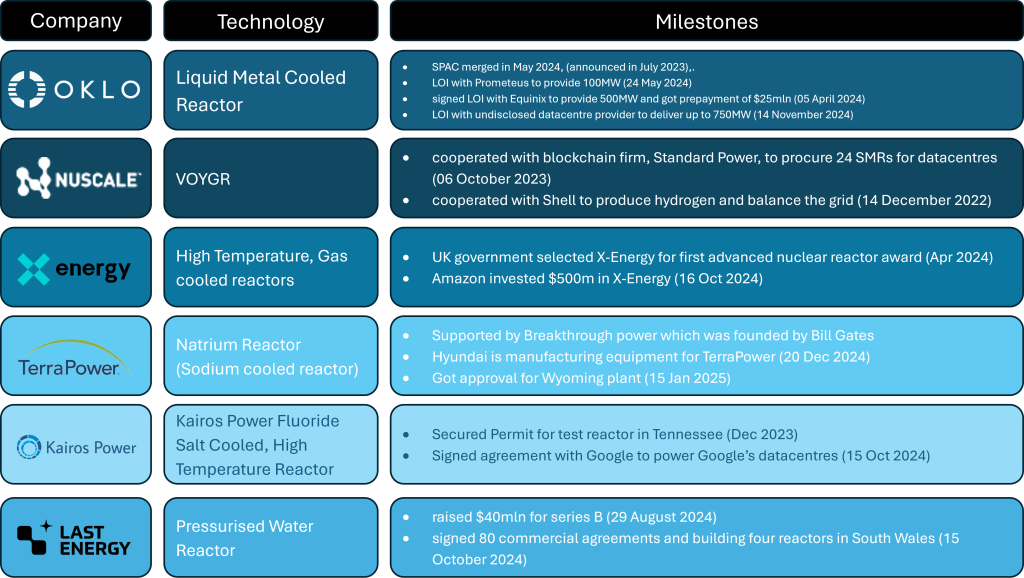Securing funding for new nuclear fission technology is no small feat. Despite the challenges, several pioneering companies have not only attracted investment but are also making significant strides in developing commercially viable technologies. Here’s a closer look at some of the most talked-about cases and the strategies they’ve used to advance this cutting-edge field.
Interest in nuclear fission—often seen as an “old-new” technology—saw a resurgence last autumn. This was fueled by reports that major tech companies like Google, Amazon, Meta, and Microsoft are either investing in or exploring nuclear technology to power energy-hungry AI operations.
Some startups, such as TerraPower, have been around for years, steadily progressing from early concepts to the construction of test facilities. Most of the companies we reviewed focus on innovative fourth-generation (Gen IV) reactors, with Last Energy being a notable exception, opting for third-generation (Gen III) pressurized water reactors (PWRs). The advanced nature of Gen IV technologies introduces unique challenges to financing, but these companies have found creative ways to navigate this complex landscape.

Diverse Funding Approaches
Deep-pocketed Shareholders:
TerraPower exemplifies this approach, relying on visionary investors like Bill Gates, who have both the resources and faith in the long-term potential of the technology.
Challenging Journeys:
Companies like NuScale have faced significant hurdles, including difficulties with early backers. Their journey highlights the persistence required to bring groundbreaking ideas to life.
Big Tech Backing:
Startups like Oklo, X-Energy, and Kairos Power have attracted investments from major technology companies, drawn by the promise of energy solutions tailored for their data centres.
Commercial Viability First:
Unlike others, Last Energy has focused on proven Gen III PWR technology rather than experimental designs. By signing over 80 agreements with prospective users, they’ve demonstrated the commercial readiness of their solution and secured commitments from potential clients.
Conclusion
Nuclear fission remains a field fraught with technical risks, commercial uncertainty, and the need for substantial initial capital. Yet, as these examples illustrate, the obstacles are not insurmountable. With the right strategies, innovative companies are proving that fission technology can play a vital role in the energy mix of the future.


Leave a Reply